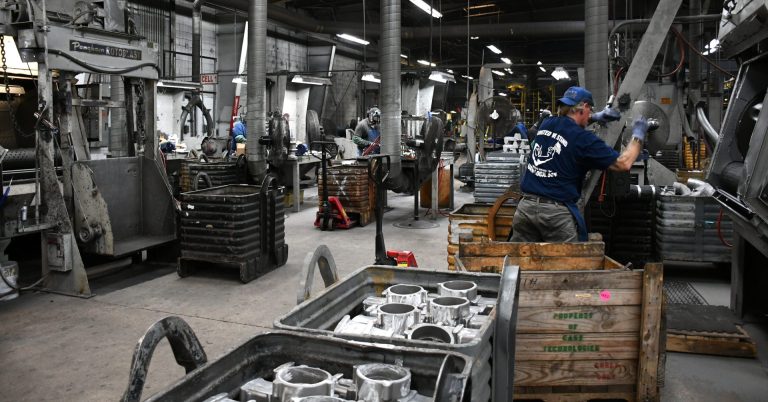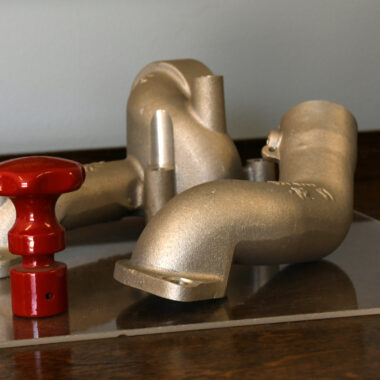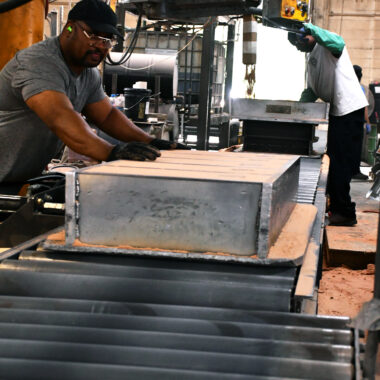Unraveling About Aluminum Casting: From Essentials to Knowledge
Wiki Article
Crafting Perfection: Just How to Achieve High-Quality Light Weight Aluminum Castings Every Time
In the world of light weight aluminum casting, the quest of perfection is a continual journey that calls for a meticulous approach and a keen understanding of the intricacies included. Achieving consistent top quality aluminum spreadings requires a detailed grasp of the procedures, from picking the ideal alloy to performing exact mold designs and thoroughly managing spreading criteria.Understanding Light Weight Aluminum Casting Processes
Aluminum casting procedures, necessary in the production market, involve the detailed improvement of liquified light weight aluminum right into solid kinds with a collection of very carefully controlled steps. Recognizing these procedures is critical to attaining top quality aluminum spreadings consistently - about aluminum casting. The primary techniques made use of in light weight aluminum casting are pass away spreading, sand casting, and investment casting
Each of these procedures has its benefits and is selected based on variables like intricacy, volume, and preferred coating of the aluminum spreading. about aluminum casting. Comprehending the intricacies of these approaches is important for manufacturers aiming to create high-grade light weight aluminum spreadings continually
Picking the Right Aluminum Alloy
Selecting the appropriate aluminum alloy is a vital decision in the manufacturing of top notch light weight aluminum castings. The choice of alloy considerably influences the residential or commercial properties and characteristics of the last product. Various light weight aluminum alloys offer varying degrees of strength, deterioration resistance, machinability, and thermal conductivity. When selecting a light weight aluminum alloy for casting, it is vital to take into consideration the certain requirements of the application to make certain optimal efficiency.Among one of the most generally used light weight aluminum alloys for casting is A356. This alloy supplies outstanding castability, high stamina, and good rust resistance, making it suitable for a large range of applications. 6061 light weight aluminum alloy is preferred for its superior weldability and good mechanical residential properties. For applications calling for high strength, 7075 aluminum alloy is a prominent option as a result of its extraordinary strength-to-weight proportion.
Along with mechanical buildings, factors to consider such as price, schedule, and post-casting procedures need to additionally affect the option of the right light weight aluminum alloy. By carefully evaluating these variables, manufacturers can ensure the production of top notch aluminum castings that meet the desired specifications.
Applying Correct Mold Design
Developing an efficient mold and mildew design is critical for making certain the successful production of top notch aluminum castings. Proper mold and mildew layout plays a considerable duty in attaining the preferred look at this website features of the last product. To carry out an effective mold and mildew design, variables such as material flow, cooling rates, and component geometry must be very carefully considered.One secret facet of mold and mildew style is making certain appropriate dental filling and solidification of the aluminum within the mold and mildew cavity. This includes creating jogger and gating systems that assist in smooth metal flow and stop issues such as air entrapment or insufficient dental filling. In addition, incorporating air conditioning networks right into the mold and mildew style aids regulate solidification rates and reduce the danger of porosity or shrinkage problems.

Controlling Casting Parameters

Guaranteeing Post-Casting Quality Checks
To preserve the high top quality of light weight aluminum castings, thorough post-casting top quality checks are necessary. After discover this info here the spreading procedure is finished, it is critical to guarantee that the last products satisfy the preferred requirements and requirements. Among the primary high quality checks includes evaluating the surface area finish of the castings to determine any kind of defects such as porosity, splits, or surface irregularities. This visual evaluation is commonly supplemented by non-destructive testing methods like ultrasonic testing or color penetrant assessment to discover interior defects that may compromise the honesty of the casting.Dimensional precision is an additional essential facet that must be confirmed during post-casting resource high quality checks. Measurements of crucial dimensions and resistances must be taken to confirm that the castings adapt the called for specs. Additionally, mechanical buildings such as firmness, tensile strength, and influence resistance may require to be examined with material testing to guarantee that the spreadings possess the necessary stamina and durability for their desired application.
Final Thought
In conclusion, achieving top notch aluminum spreadings requires a comprehensive understanding of the casting procedures, picking the proper alloy, creating mold and mildews effectively, managing spreading criteria meticulously, and carrying out post-casting top quality checks vigilantly. By adhering to these steps, makers can continually produce light weight aluminum spreadings that meet the highest criteria of quality and performance.Attaining regular premium light weight aluminum spreadings requires a thorough grasp of the processes, from choosing the ideal alloy to executing precise mold styles and thoroughly managing casting specifications. The key approaches used in aluminum spreading are pass away spreading, sand spreading, and financial investment spreading.
Financial investment spreading, additionally known as precision casting, includes producing wax patterns that are coated in ceramic to develop mold and mildews.Picking the ideal light weight aluminum alloy is a critical decision in the production of high-quality aluminum spreadings.Making certain specific control over spreading criteria is essential for maintaining consistency and top quality in light weight aluminum casting production.
Report this wiki page